
Louis XIV, also known as Louis the Great or the Sun King, was King of France from 14 May 1643 until his death in 1715. His reign of 72 years and 110 days is the longest recorded of any monarch of a sovereign country in history. Although Louis XIV's France was emblematic of the age of absolutism in Europe, the King surrounded himself with a variety of significant political, military and cultural figures, such as Mazarin, Colbert, Louvois, the Grand Condé, Turenne, Vauban, Boulle, Molière, Racine, Boileau, La Fontaine, Lully, Charpentier, Marais, Le Brun, Rigaud, Bossuet, Le Vau, Mansart, Charles Perrault, Claude Perrault and Le Nôtre.
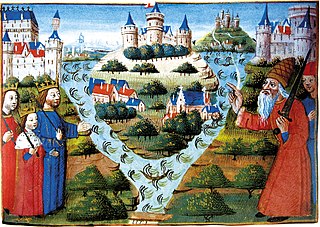
The Treaty of Verdun, agreed in August 843, divided the Frankish Empire into three kingdoms among the surviving sons of the emperor Louis I, the son and successor of Charlemagne. The treaty was concluded following almost three years of civil war and was the culmination of negotiations lasting more than a year. It was the first in a series of partitions contributing to the dissolution of the empire created by Charlemagne and has been seen as foreshadowing the formation of many of the modern countries of western Europe.
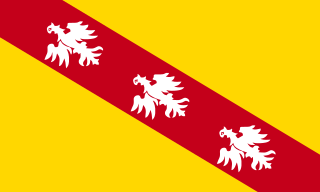
The Duchy of Lorraine, originally Upper Lorraine, was a duchy now included in the larger present-day region of Lorraine in northeastern France. Its capital was Nancy.

The Peace of Ryswick, or Rijswijk, was a series of treaties signed in the Dutch city of Rijswijk between 20 September and 30 October 1697. They ended the 1688 to 1697 Nine Years' War between France and the Grand Alliance, which included England, Spain, Austria, and the Dutch Republic.

Lotharingia was a short-lived medieval successor kingdom of the Carolingian Empire. As a more durable later duchy of the Ottonian Empire, it comprised present-day Lorraine (France), Luxembourg, Saarland (Germany), the eastern half of Belgium and the southern half of Netherlands, along with parts of today's North Rhine-Westphalia (Germany), Rhineland-Palatinate (Germany) and Nord (France). It was named after King Lothair II, who received this territory after his father Lothair I's kingdom of Middle Francia was divided among his three sons in 855.

The Nine Years' War (1688–1697), often called the War of the Grand Alliance or the War of the League of Augsburg, was a conflict between France and a European coalition which mainly included the Holy Roman Empire, the Dutch Republic, England, Spain, Savoy and Portugal. It was fought in Europe and the surrounding seas, in North America, and in India. It is sometimes considered the first global war. The conflict encompassed the Williamite war in Ireland and Jacobite risings in Scotland, where William III and James II struggled for control of England and Ireland, and a campaign in colonial North America between French and English settlers and their respective Native American allies.
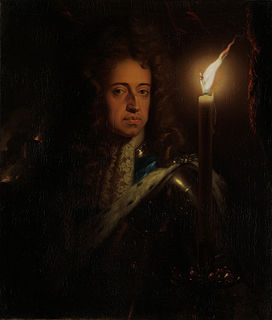
The Grand Alliance was the anti-French coalition formed on 20 December 1689 between England, the Dutch Republic and the Holy Roman Empire. It was signed by the two leading opponents of France: William III, King of England and Stadtholder of the Dutch Republic, and Emperor Leopold, on behalf of the Archduchy of Austria.

Saarlouis is a town in Saarland, Germany, capital of the district of Saarlouis. In 2017, the town had a population of 34,758. Saarlouis, as the name implies, is located on the river Saar. It was built as a fortress in 1680 and was named after Louis XIV of France.

MonsieurPhilippe I, Duke of Orléans, was the younger son of King Louis XIII of France and his wife, Anne of Austria. His older brother was the "Sun King", Louis XIV. Styled Duke of Anjou from birth, Philippe became Duke of Orléans upon the death of his uncle Gaston in 1660. In 1661, he also received the dukedoms of Valois and Chartres. Following Philippe's victory in battle in 1671, Louis XIV granted his brother the dukedom of Nemours, the marquisates of Coucy and Folembray, and the countships of Dourdan and Romorantin.

Lunéville is a commune in the northeastern French department of Meurthe-et-Moselle.

Leopold the Good was Duke of Lorraine and Bar from 1690 to his death. Through his son Francis Stephen, he is the direct male ancestor of all rulers of the Habsburg-Lorraine dynasty, including all Emperors of Austria.

The Treaty of London (1700) or Second Partition Treaty was the second attempt by Louis XIV of France and William III of England to impose a diplomatic solution to the issues that led to the 1701-1714 War of the Spanish Succession. Both divided the Spanish Empire without prior consultation and since the Spanish viewed an undivided Empire as non-negotiable, historians generally view them as largely unenforceable.

Longwy is a commune in the French department of Meurthe-et-Moselle, Lorraine, administrative region of Grand Est, northeastern France.

The Treaties of Peace of Nijmegen were a series of treaties signed in the Dutch city of Nijmegen between August 1678 and October 1679. The treaties ended various interconnected wars among France, the Dutch Republic, Spain, Brandenburg, Sweden, Denmark-Norway, the Prince-Bishopric of Münster, and the Holy Roman Empire. The most significant of the treaties was the first, which established peace between France and the Dutch Republic and placed the northern border of France very near its modern position.

The Upper Rhenish Circle was an Imperial Circle of the Holy Roman Empire established in 1500 on the territory of the former Duchy of Upper Lorraine and large parts of Rhenish Franconia including the Swabian Alsace region and the Burgundian duchy of Savoy.
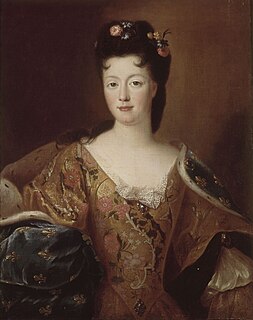
Élisabeth Charlotte d'Orléans was a petite-fille de France, and Duchess of Lorraine and Bar by marriage to Leopold, Duke of Lorraine. She was regent of Lorraine and Bar during the minority (1729–1730) and absence of her son (1730–1737), and suo jure Princess of Commercy 1737–1744. Among her children was Francis I, Holy Roman Emperor, a co-founder of the royal House of Habsburg-Lorraine.

Hon-Hergies is a commune in the Nord department in northern France.
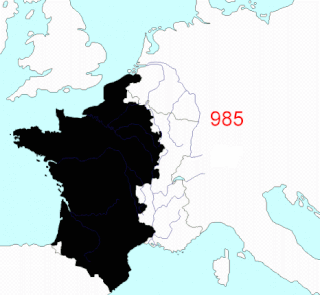
This article describes the process by which the territorial extent of metropolitan France came to be as it is since 1947. The territory of the French State is spread throughout the world. Metropolitan France is that part which is in Europe.

Henrietta Anne of England was the youngest daughter of King Charles I of England and Queen Henrietta Maria.
The Battle of Ortenbach, also known as the Battle of Gengenbach, took place on 23 July 1678 during the closing stages of the 1672-1678 Franco-Dutch War, in the modern German state of Baden-Württemberg. It featured a French army commanded by François de Créquy and an Imperial force under Charles V, Duke of Lorraine.